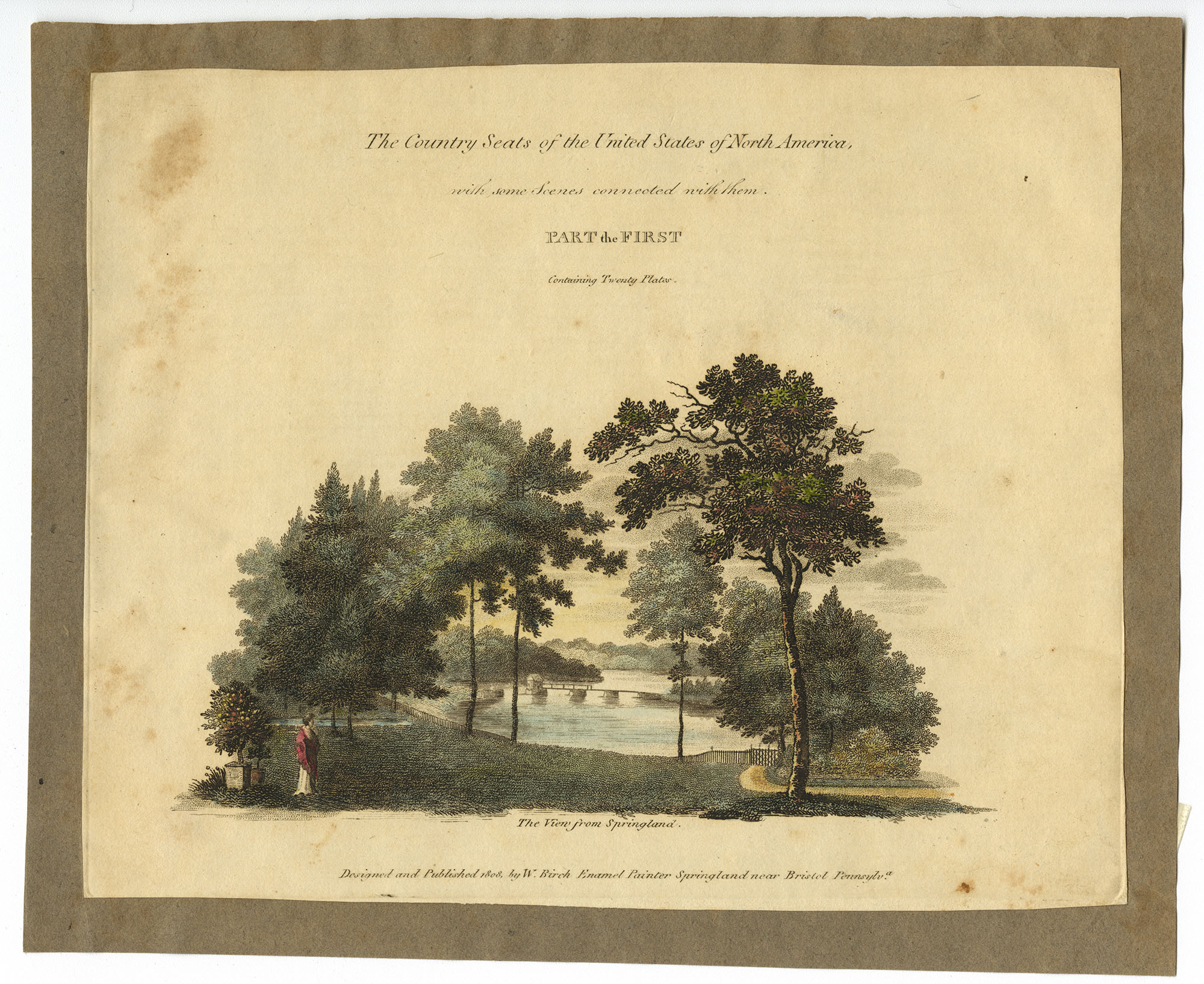
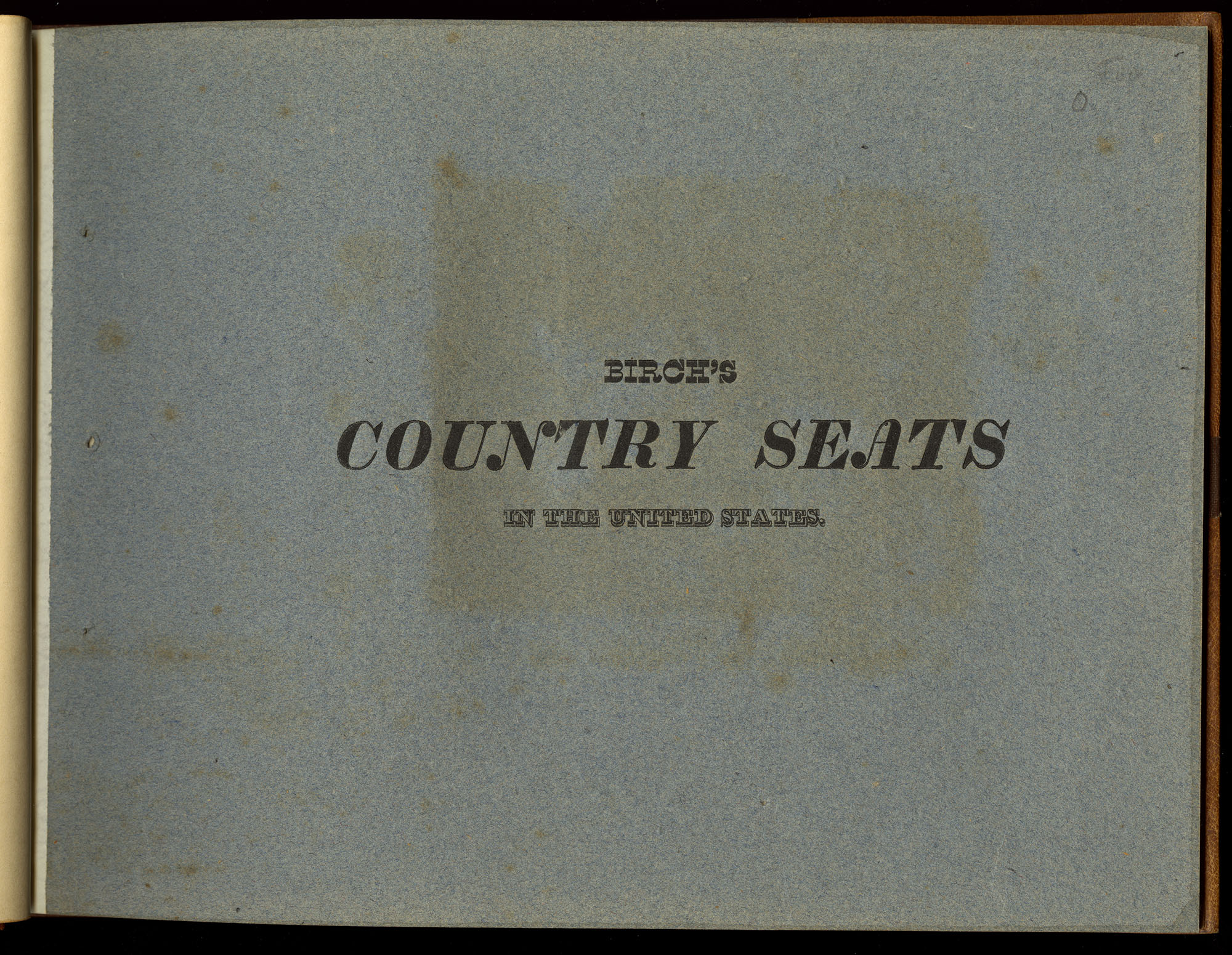
|
William Birch, The Country Seats of the United States of North America … Part the First. (Philadelphia, 1809). Library Company of Philadelphia.
This is the first trade edition of The Country Seats, with an engraved hand-colored title page featuring a “View from Springland.” Its original blue paper wrapper is bound in. The preface presents Birch’s ideal of the country seat and its role in forming the national character.
|
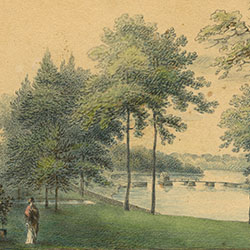 |
William Birch, View from Springland, ca. 1808. Watercolor. Library Company of Philadelphia. David Doret and Linda G. Mitchell Collection.
This is the original watercolor used to engrave the title page of the first trade edition. Note that here the vegetation has spring-like colors, whereas hand coloring in the trade edition is fall-like. |
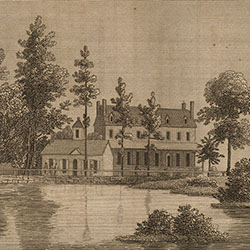 |
William Birch, Bath, near Bristol, Pennsylvania, engraving in The Port Folio, (Philadelphia, June 1811). Library Company of Philadelphia.
The format and subject of Birch’s Country Seats was to some degree anticipated by the many engravings of picturesque landscapes that appeared in earlier American magazines, including this view taken near Birch’s home, by Birch himself. The scene is not a private home, but a public country hotel near a mineral spring. |
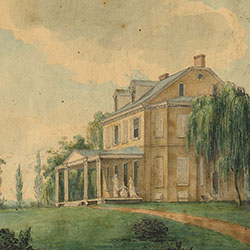 |
William Birch, Andalusia, ca. 1808. Watercolor. Library Company of Philadelphia. Bequest of Charles A. Poulson.
This view of Andalusia, the still-standing Biddle family house, may have been intended for The Country Seats. It raises the possibility that Birch drew the other views in a larger size and reduced them in the engravings. He may have done this to make the book cheaper and easier to bind and transport, or he may simply have preferred to work in miniature, a style in which he had already had success. |
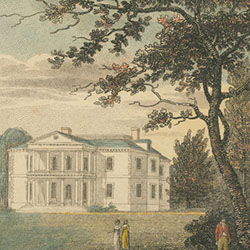 |
William Birch, Lansdowne, the seat of the late Wm. Bingham Esq. Pennsylvania (Philadelphia,1809). Hand-colored engraving. Library Company of Philadelphia. Gift of S. Marguerite Brenner.
Lansdowne was considered by many to be the best country house in America. William Bingham was fabulously wealthy; his wife Anne Willing Bingham was the hostess of the Federalist era “Republican Court.”
Birch wrote: Lansdowne lies on the bank of the Pastoral Schuylkill, a stream of peculiar beauty, deservedly the delight and boast of the shores it fertilizes. The house was built upon a handsome and correct plan by the former governor Penn. |
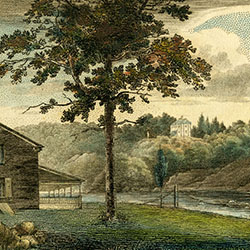 |
William Birch, Mendenhall Ferry, Schuylkill, Pennsylvania (Philadelphia, 1809). Hand-colored engraving. Library Company of Philadelphia. Gift of S. Marguerite Brenner.
This is the only country view showing a public building, but in its celebration of the Schuylkill River scenery it is related to many of the other views.
Birch wrote: This beautiful spot close upon the falls of Schuylkill is one of nature’s choicest retreats. Mr. Mendenhall has opened his house for public entertainments. |
 |
William Birch, View from Belmont, Pennsyla, the seat of Judge Peters (Philadelphia, 1809). Hand-colored engraving. Library Company of Philadelphia, Gift of S. Marguerite Brenner.
Birch wrote: It is impossible for the artist, who has fixed his attention on the various beauties of Schuylkill, to leave the study of its charms. Here you pass from the wild romantic scene; the rugged stone with wood and water bound to expand the sight from this high lifted lawn, to view in open space the world below, the riches of the richest state; the big metropolis in the woods, the chequered country with her merchants’ seats; the bustle of agriculture, and the verdant banks of the fluid mirror that reflects the sky; and further on to view Mount Holly mingled with the air in Jersey. The whole a soft and visionary scene. |
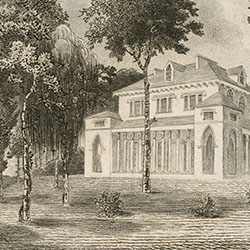 |
William Birch, Sedgley the Seat of Mr. Wm. Crammond (Philadelphia, 1809). Engraving. Library Company of Philadelphia.
Sedgley, designed by Benjamin Latrobe (1764-1820), was the first gothic house built in America. This plate is not colored; Birch offered the book and the plates in both states. In this state you can easily see the stipple dots that Birch added in places to all the country views, to imitate the texture of watercolor.
Birch wrote: This beautiful gothic structure, which so happily graces the luxuriant banks of Schuylkill … whose gentle stream courses lowly and humble, amidst romantic woods, gently descending lawns and caverned rocks. |
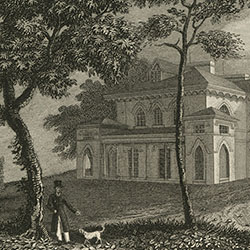 |
Edward W. Clay after Cephas Grier Childs, Sedgley Park (Philadelphia: C. G. Childs, 1828). Etched by J. W. Steel and W. H. Hay. Engraving. Library Company of Philadelphia. McAllister Collection.
In 1827 C.G. Childs began publishing in parts a sort of sequel to Birch’s The City of Philadelphia, called Views of Philadelphia and its Environs, showing buildings erected in more recent years. It included a view of Sedgley from a different angle than Birch’s, but otherwise much the same. This highlights how profound Birch’s influence was on the next generation of artists. |
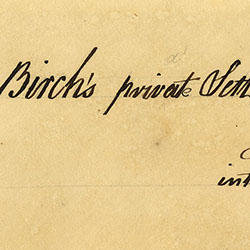 |
William Birch, Birch’s privat Sett [of Country Seats of US,] with variations and additions, intended to be continued but no encouragement (Philadelphia, ca. 1820). Library Company of Philadelphia. Anonymous gift.
In about 1820, Birch made this scrapbook mockup for a proposed new, expanded edition of The Country Seats. The inscription on the fly leaf expresses his profound disappointment at its failure. The mockup includes copies of many of the plates in the trade edition pasted in, followed by three charming original watercolors which must represent some of the proposed additions. |
 |
William Birch, Analostun, or Mason’s Island, with one wing of the House, at Georgetown, and two of Mr. Custus’s in the distance. Watercolor. Library Company of Philadelphia. Anonymous gift.
John Mason built a Greek revival country seat in the 1790s on the island across the Potomac from Georgetown. In 1806 one wing of the house burned, which must be why Birch shows only part of it. George Washington Park Custis was Washington’s stepson, and his house, dimly seen in the distance, is the site of Arlington National Cemetery. |
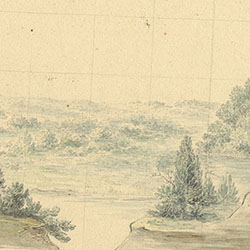 |
William Birch, Point Breeze. The Residence of Joseph Bonapart, at Bordentown on the Delaware. Watercolor. Library Company of Philadelphia. Anonymous gift.
Joseph Bonaparte (1768-1844), Napoleon’s older brother, bought a house at Bordentown, New Jersey in 1816, which burned in 1820 and was quickly rebuilt in a grand style. The landscaped park was even more spectacular, however, and that is the subject of this watercolor sketch. |
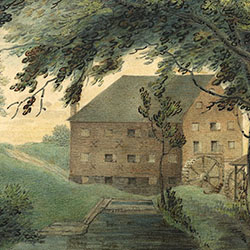 |
William Birch, The Mill and House of Mr. E. Esirel, late Sheriff of Phila., Near Christien. Watercolor, Library Company of Philadelphia. Anonymous gift.
This final, charming view suggests an entirely new direction for The Country Seats, a functional building in a rustic setting. Israel Israel was the Sheriff of Philadelphia in 1805-6. |
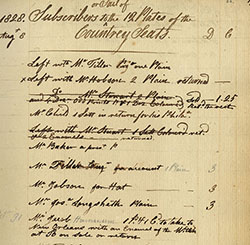 |
William Birch, Page from his Book of Profitts. Library Company of Philadelphia.
By 1828 Birch had only enough plates left over to issue a second edition with twelve plates at a reduced price. He found only twenty subscribers, two of whom returned their copies and one who bartered in exchange for a hat. |
Excerpt from Birch’s Manuscript Autobiography:
This country is new and flourishing. The mechanical arts are at their highest pitch, but the fine arts are of another complexion. They are the last polish of a refined nation. … I do not profess myself a member of the fine arts; I am a copyist only, but from my knowledge of them have been allowed judgement and taste, which is competent to give me a relish for them. |















